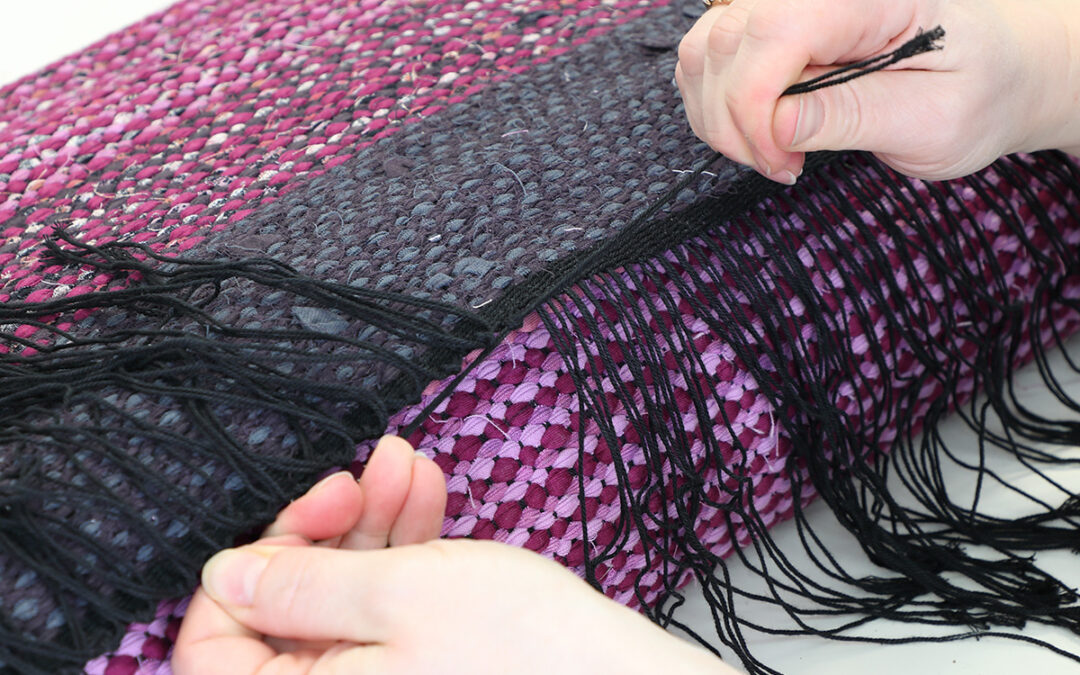Finishing the Ends of a Rug
Marjatta Hirvi
PLAN THE ENDS IN ADVANCE
The method for finishing the ends of the rug must be decided before starting to weave. Some knotting techniques require very long fringes. On the other hand, for ends that will be hemmed or finished with a woven edge, just a few centimeters of fringe is enough to tie knots that will support the rug’s edge.
Consider whether the rug ends could even become eye-catching features – perhaps finished in a contrasting color or with unique fringe styles.
Instructions for all these finishes can be found in the Theme Digi The Weaver’s Pick issue 2/2025.
FRINGES
Standard Fringes
Straight fringes are the most common way to finish rug ends. These fringes are quick to make and suit traditional rag rugs well.
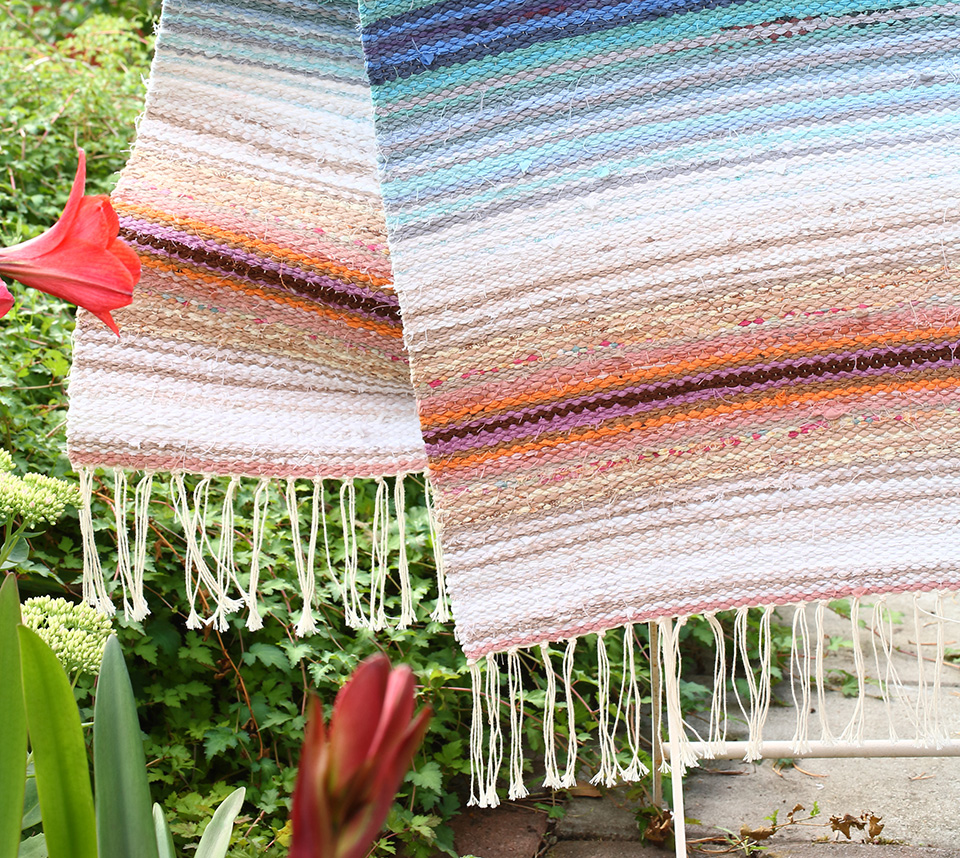
Macramé Fringes
Macramé Knots create highly decorative and eye-catching fringes. Make one or two rows of alternating square knots for a bold look.
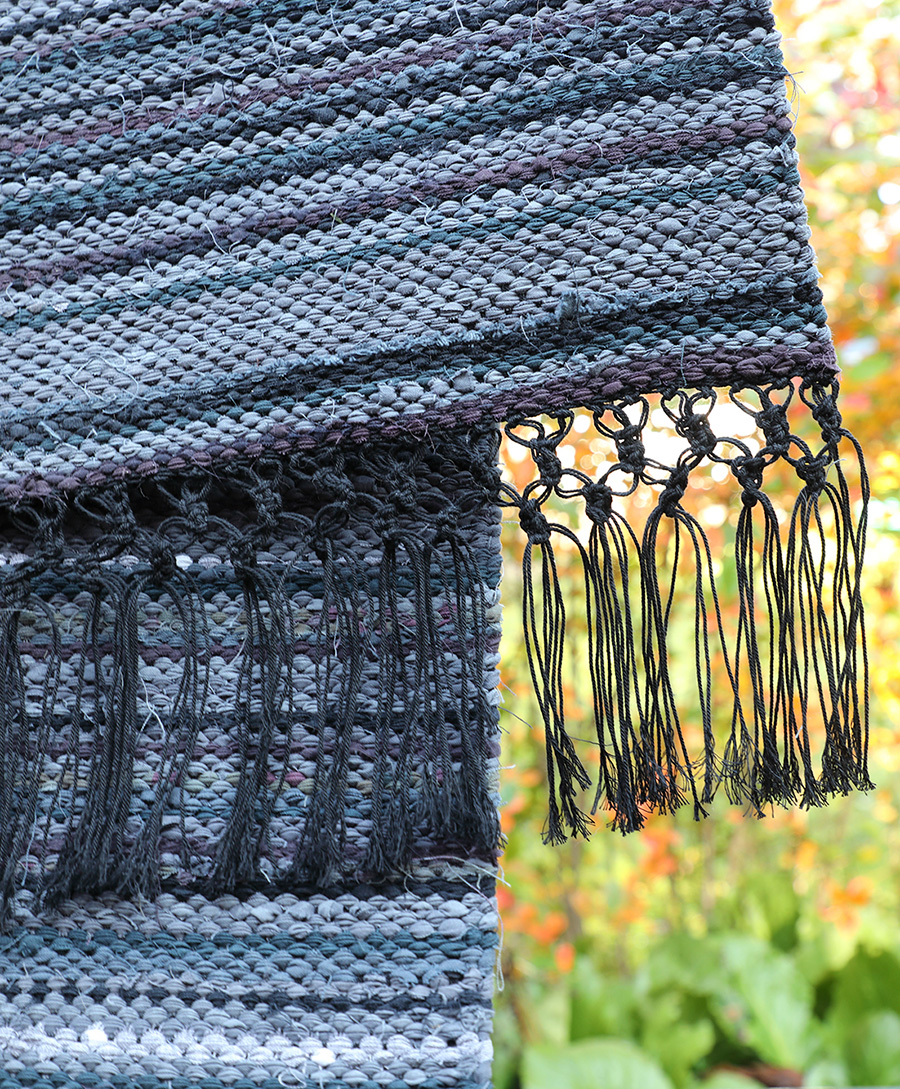
Twisted Fringes
A reliable and durable choice—twisted fringes stay neat and intact through use. First, tie the warp threads tightly with weaver’s knots, then make the twists.
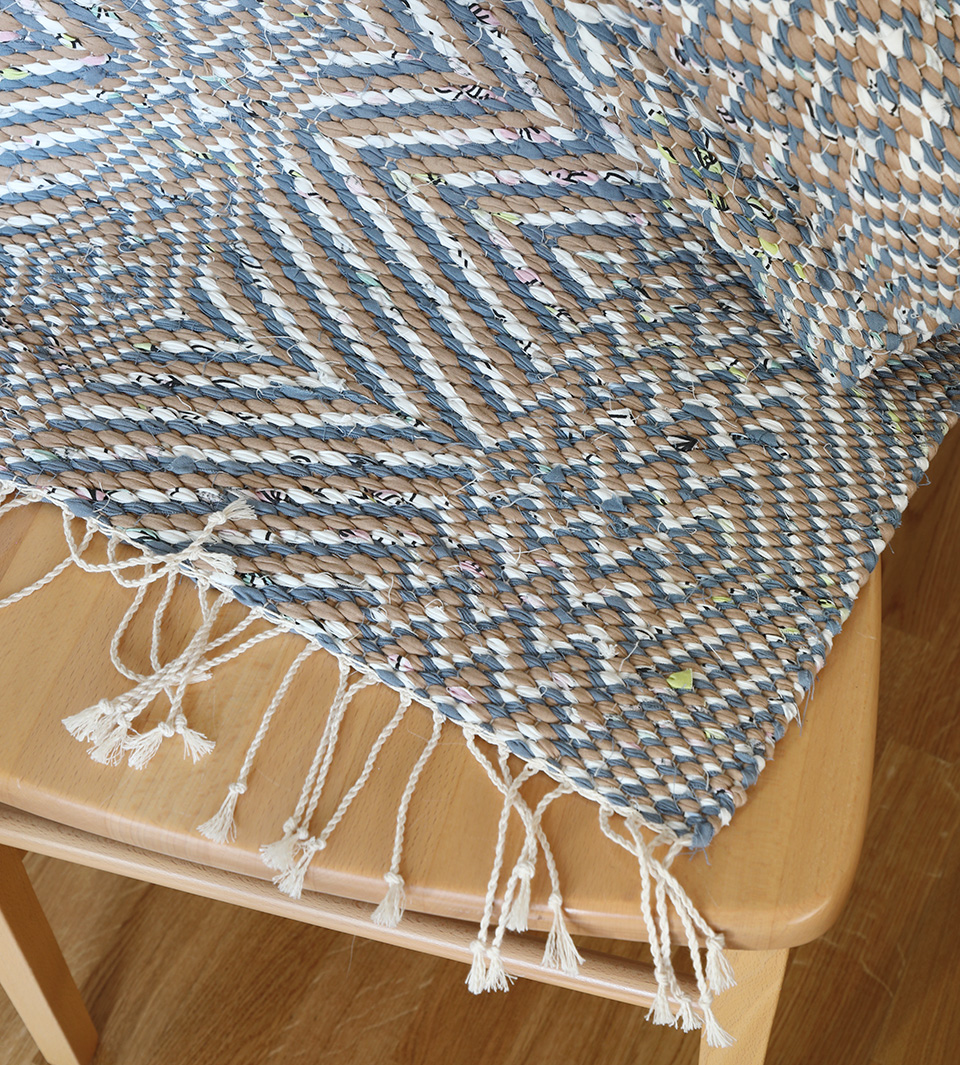
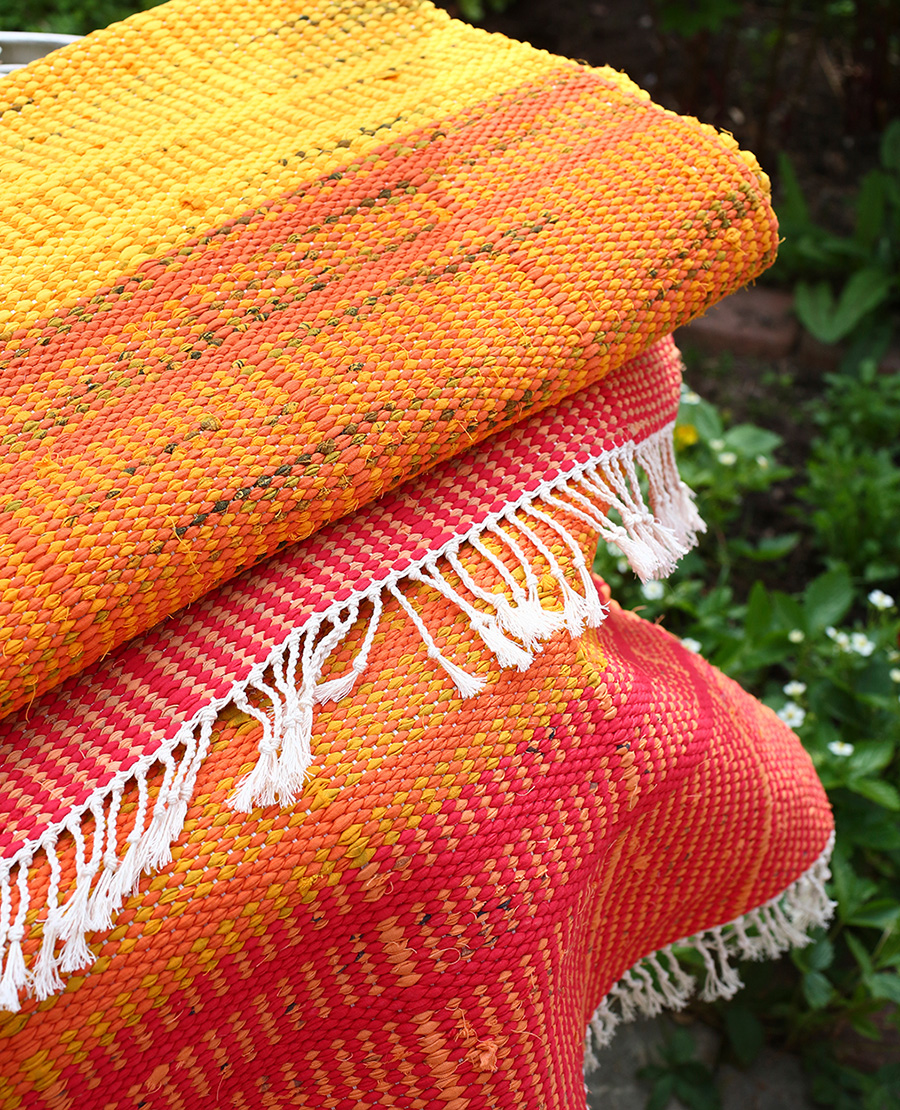
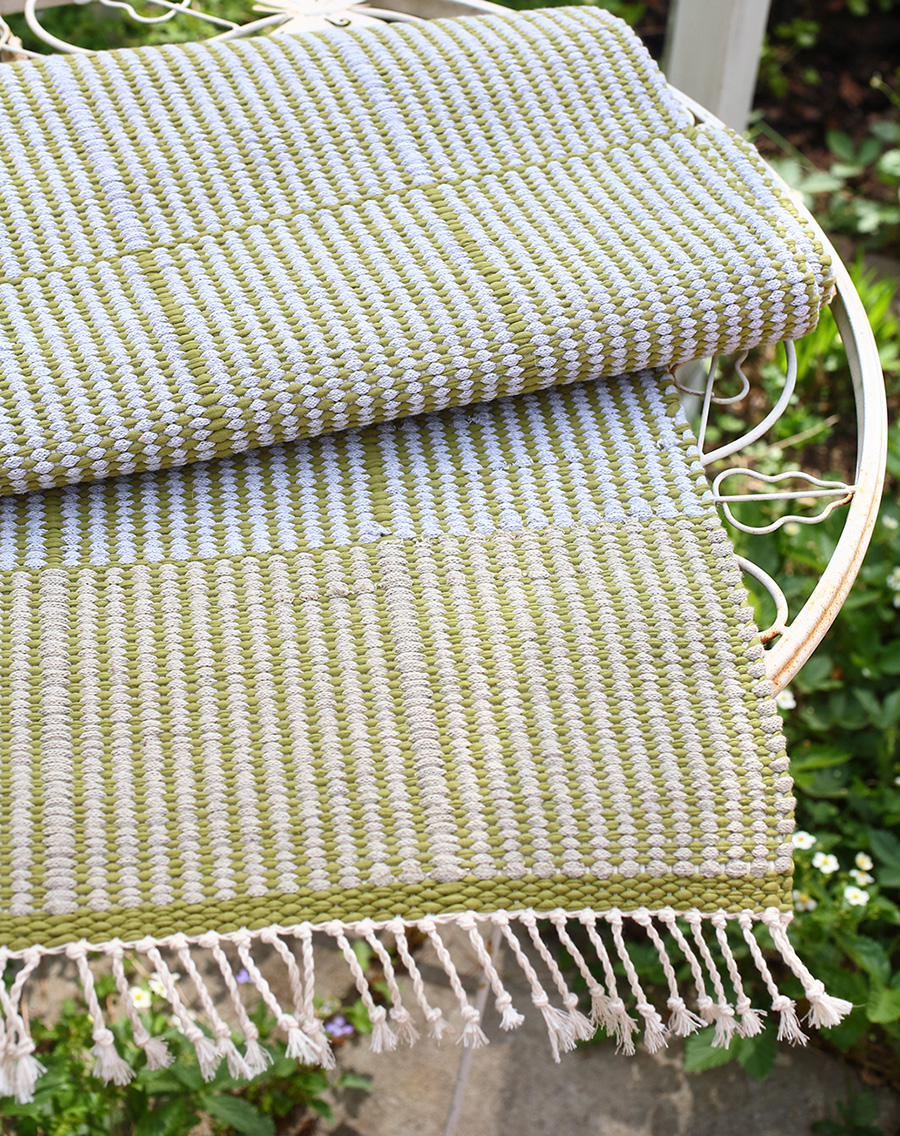
Highlighting Rug Ends. Use a bold stripe to emphasize the rug ends if the main rug design has a subdued color palette or simple pattern. However, rugs that are already vividly striped and colorful may not need an additional stripe at the ends.
Braids (Plaits)
Thick warp threads can be braided into striking finishes. Instead of ending braids with an bulky overhand knot, use a flat knot to keep the finish tidy.
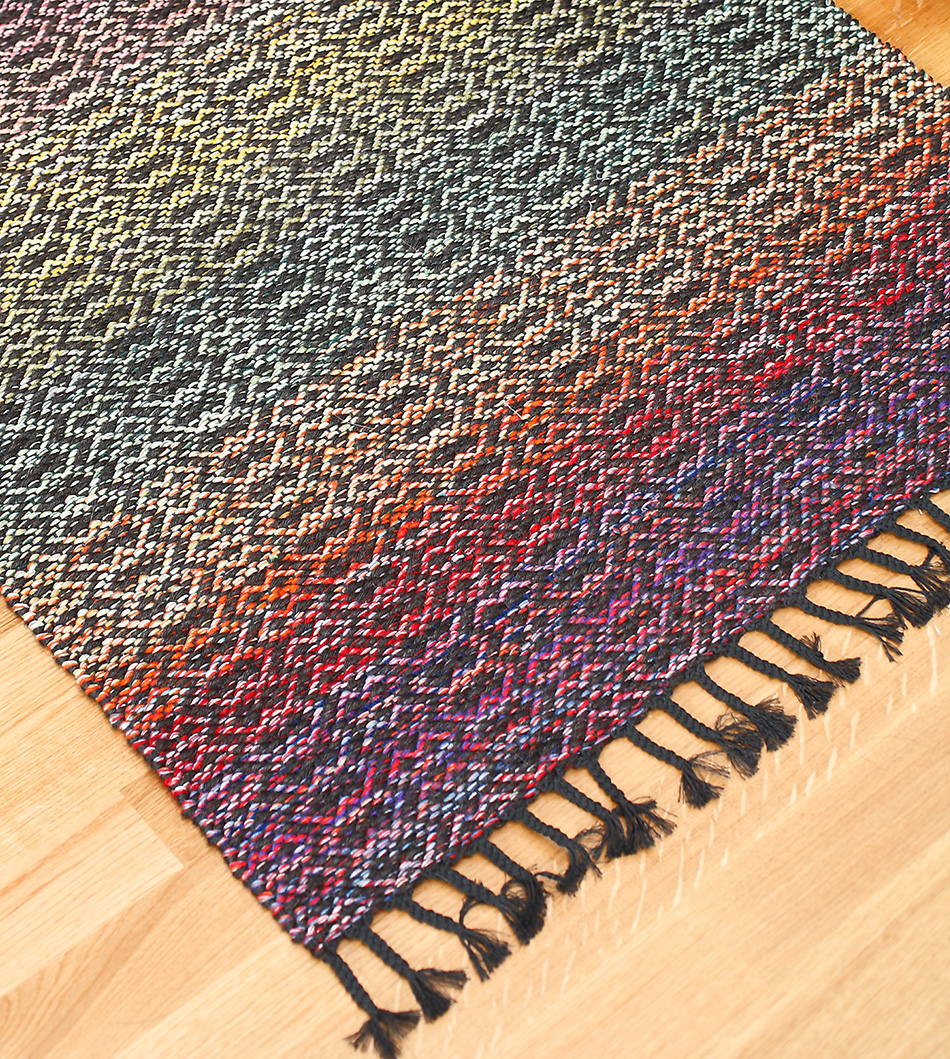
Loop Fringes and Crossed Fringes
Tie the threads into loops and crisscross patterns. After making the reef knots, tie the overhand knot a short distance from the edge, splitting the threads from adjacent knots and crossing them. This creates looped fringes and takes no more time than making standard ponytail knots.
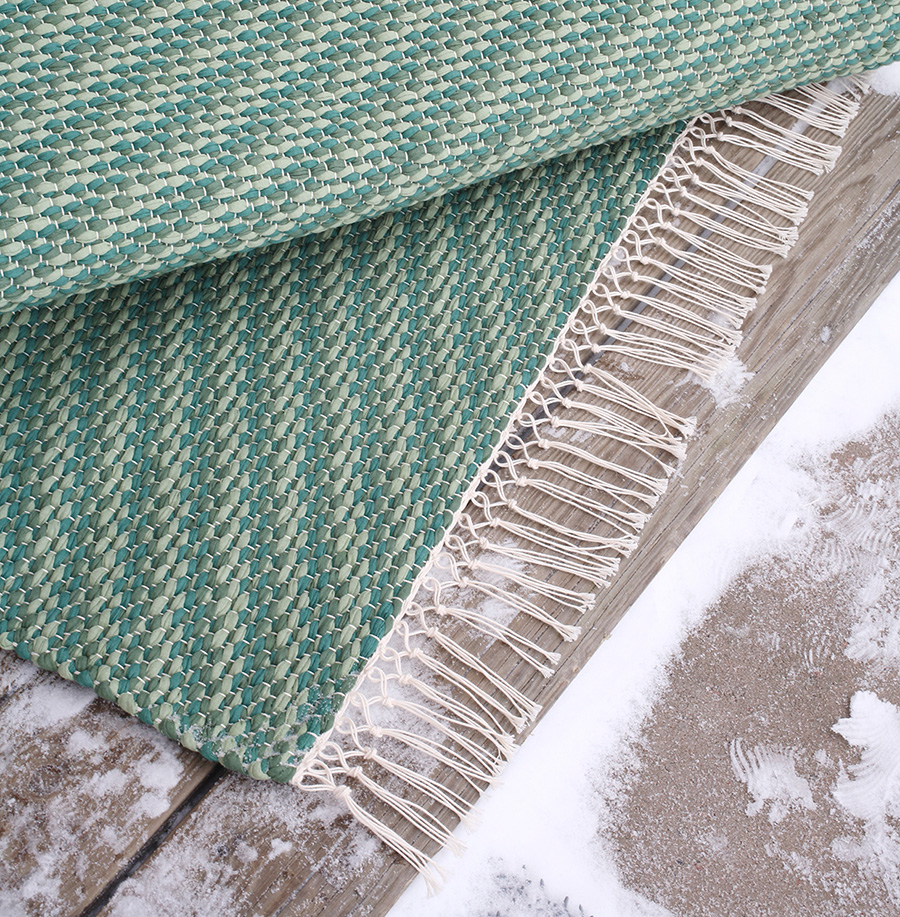
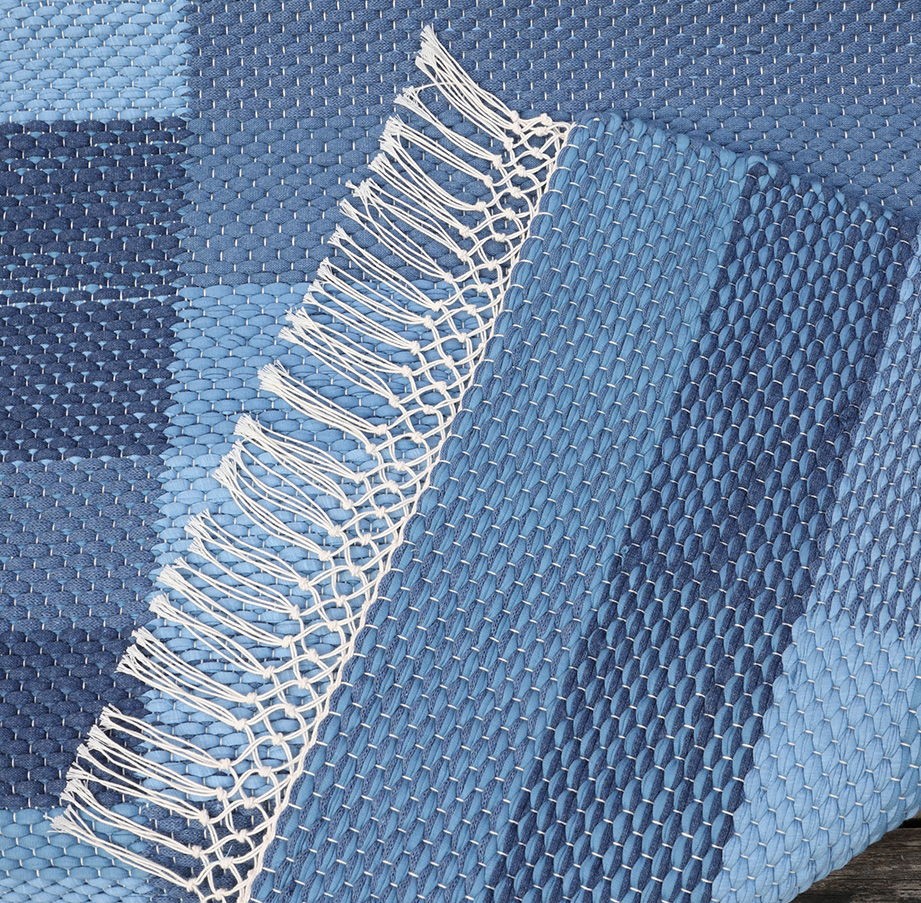
Cross Knot Fringes: Take half the threads from one knot, skip one knot, then take half the threads from the next knot, and tie them together with an overhand knot. Repeat the same crosswise tying for all threads. You may also create more rows of knots in the same crossed style.
Hidden Fringe
These fringes fully or partially conceal the warp threads. Tie the warp threads with the same weft yarn used in the rug to create fringes that blend seamlessly with the rug’s colors. You can also use multiple colors for a more varied look.
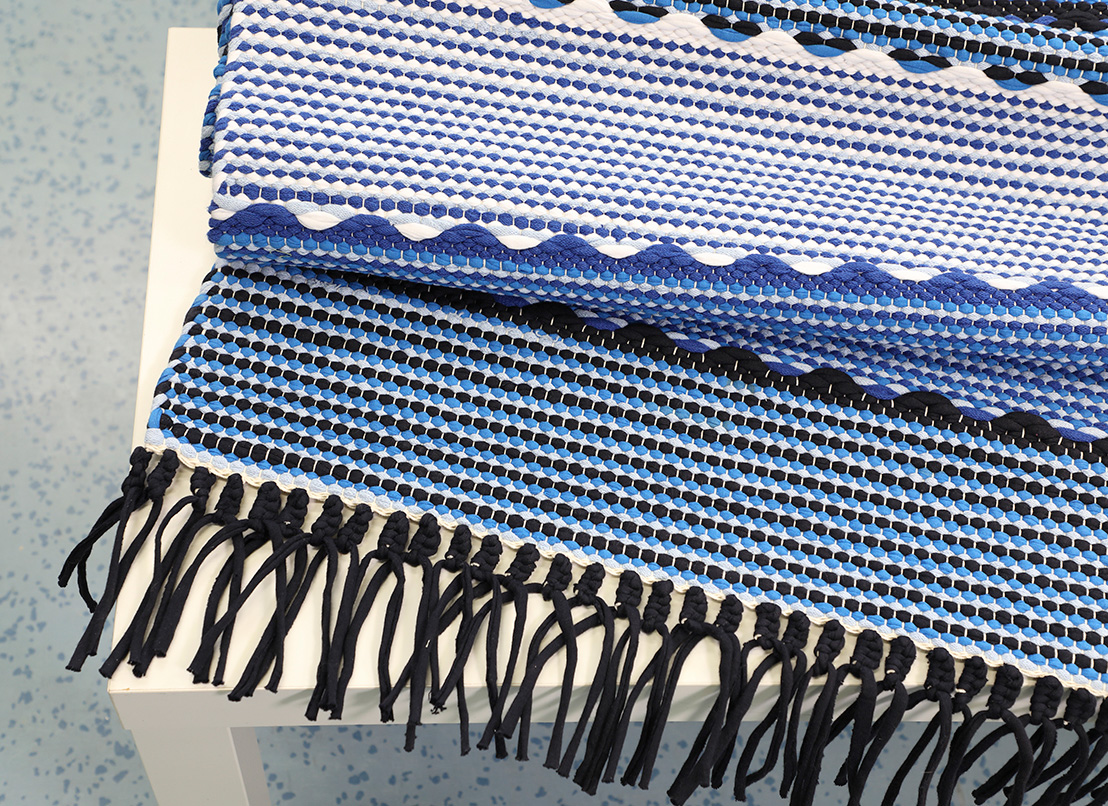
The rug warp is natural white, but it is completely hidden inside the black jersey fringes.
FINISHING WITHOUT FRINGE
Oriental Braids
An oriental braid is made at the edge of the rug using the warp threads. The ends of the warp threads are threaded back into the rug, so the rug’s structure must allow the threads to be slipped under the weft.
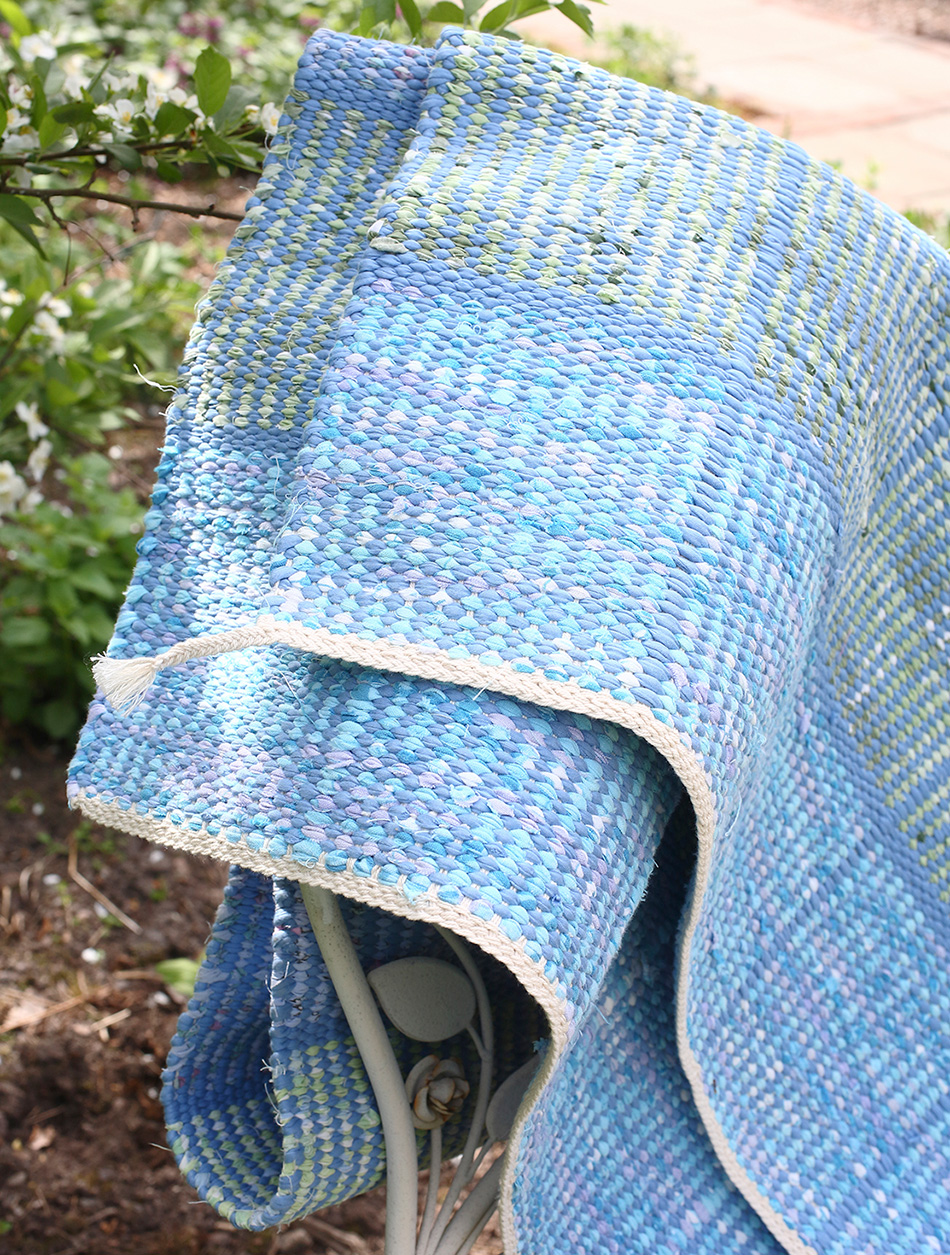
An oriental braid with five threads has been made at the end of the weft-faced rug. The braid gives the rug end a neat and durable finish.
Lace Fringes
Lace fringe requires more work than usual. The warp threads must be left very long, as the crochet is done using the warp threads.
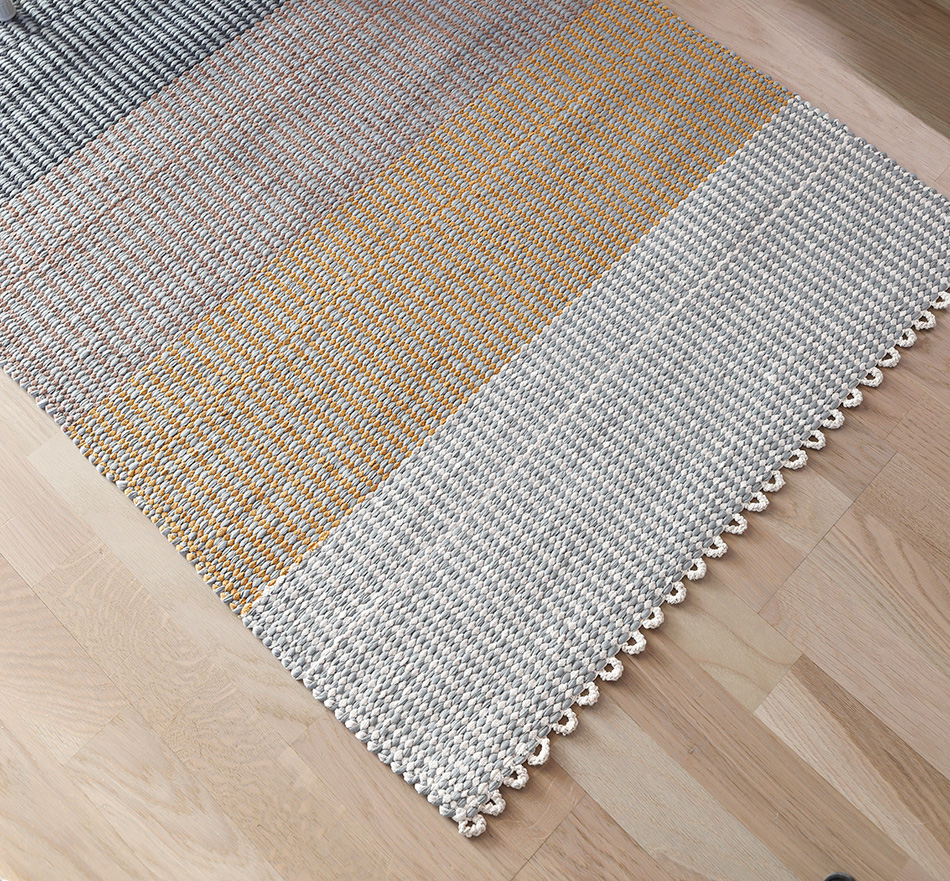
Lace Fringe 3756, The Weaver’s Pick 2/2021.
Oriental Plait
In this plait, warp threads are woven over and under others, then reversed, and finally worked back again to the edge. The warp ends are then inserted back into the rug. The plait requires slightly longer fringe than usual. This is a good way to practice finger dexterity.
Oriental Plait
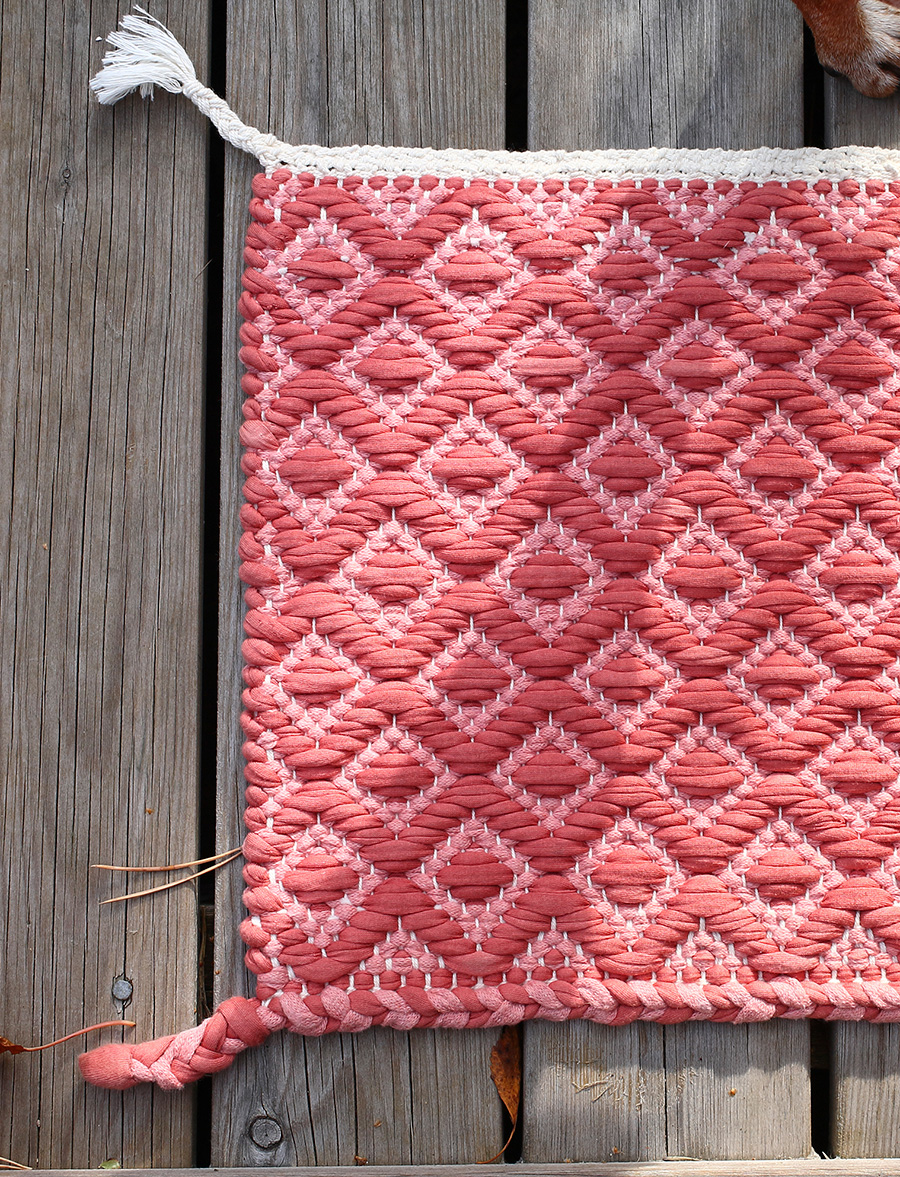
Edge Braid
Edge Braid
Edge Braid is made with an extra thread or weft yarn. The warp threads are included in the braid, but they remain only faintly visible on the reverse side. Using the same weft yarn as in the rug creates a braid that matches the edge color.
Tip: The edge braid is perfect for a small rug.
Threaded-in ends
Threaded-in ends are one of the neatest ways to finish a rug’s warp threads. However, this method cannot be used on all rugs — only on those where the warp threads can be hidden beneath the weft.
Threading the ends back narrows the rug slightly at the ends if there isn’t enough space for the warp threads. The threading doesn’t need to go far — a few centimeters is enough. The warp threads will stay hidden well. The warp ends are first secured with square knots, which keep the weft in place.
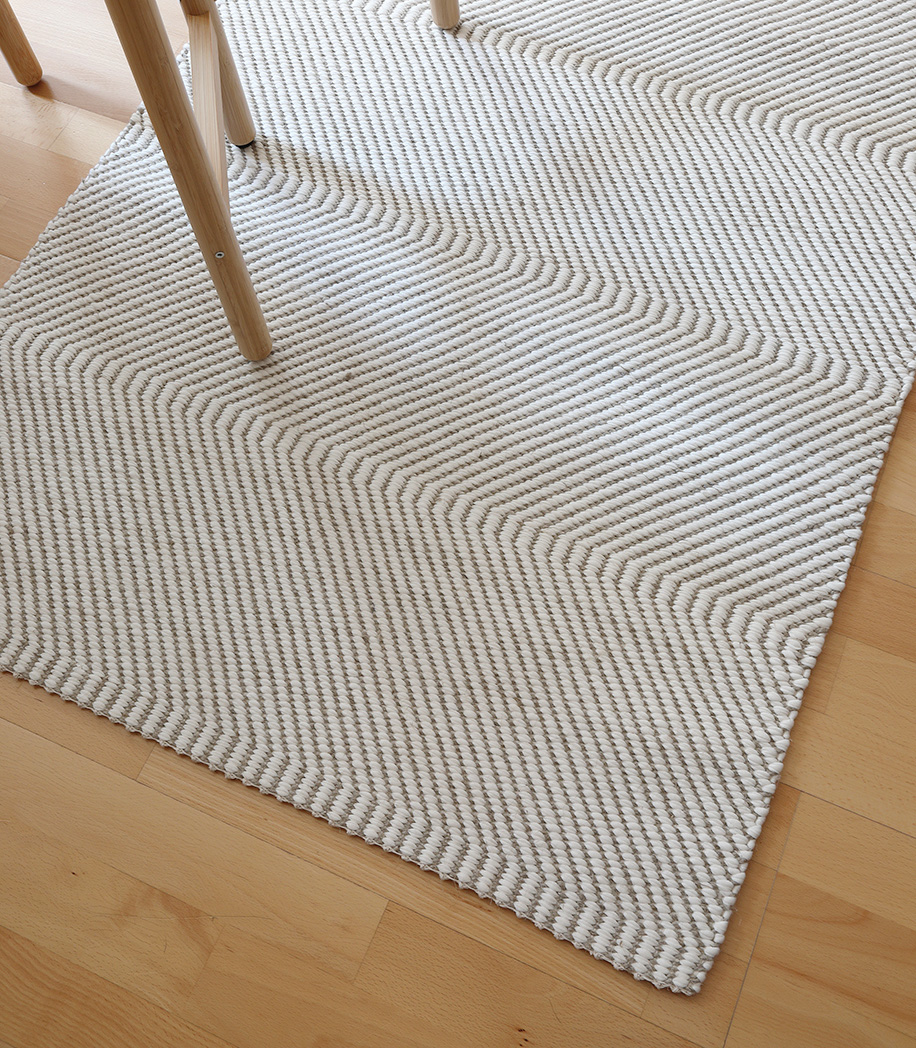
On the white rug, the warp threads have been threaded back only for the length of the straight rep section at the end.
Warp threads can also be threded back further, following a diagonal twill line, but in this rug the structure was tight enough that the threads stay in place even with a shorter insertion.
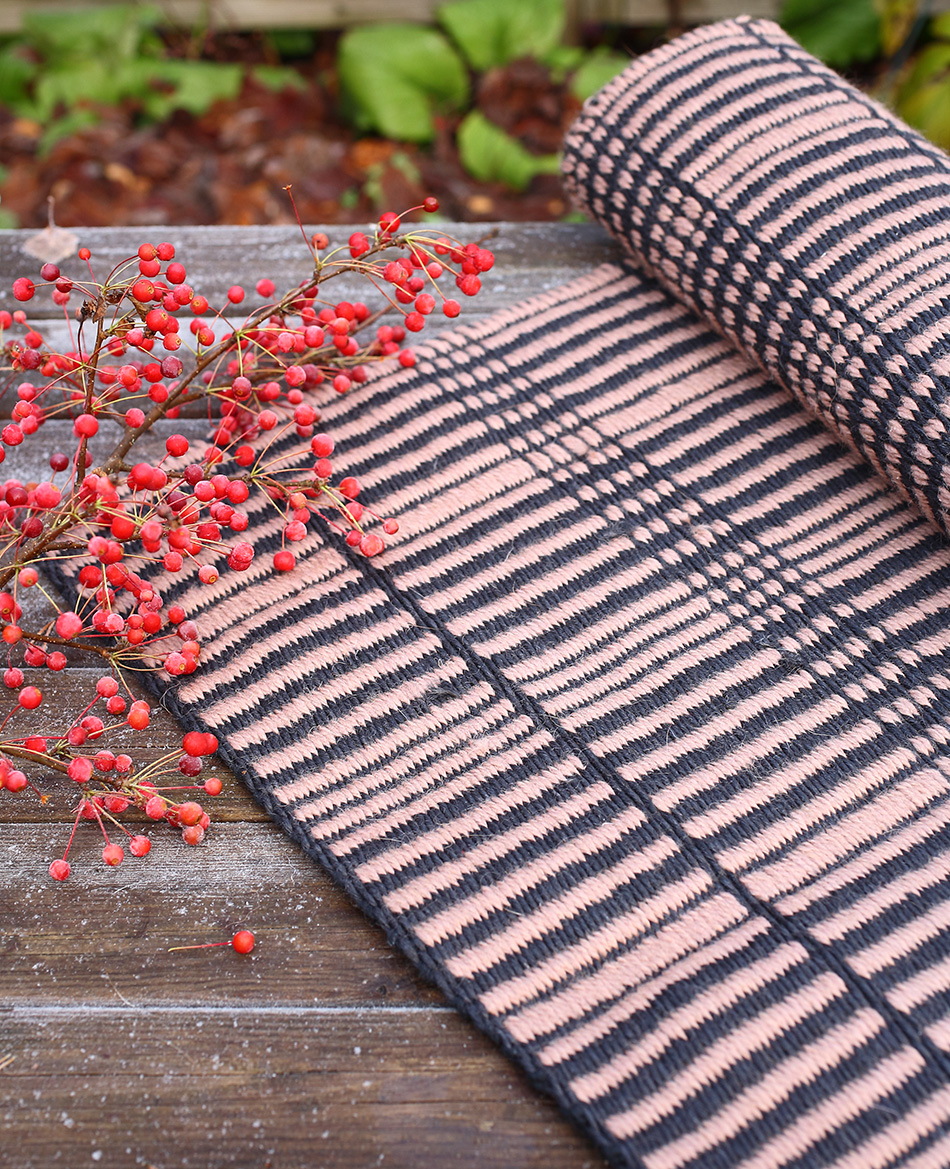
The black-brown rep rug is woven with wool yarn and jute twine. The cotton twine warp threads have been completely hidden by weaving them back into the rug.
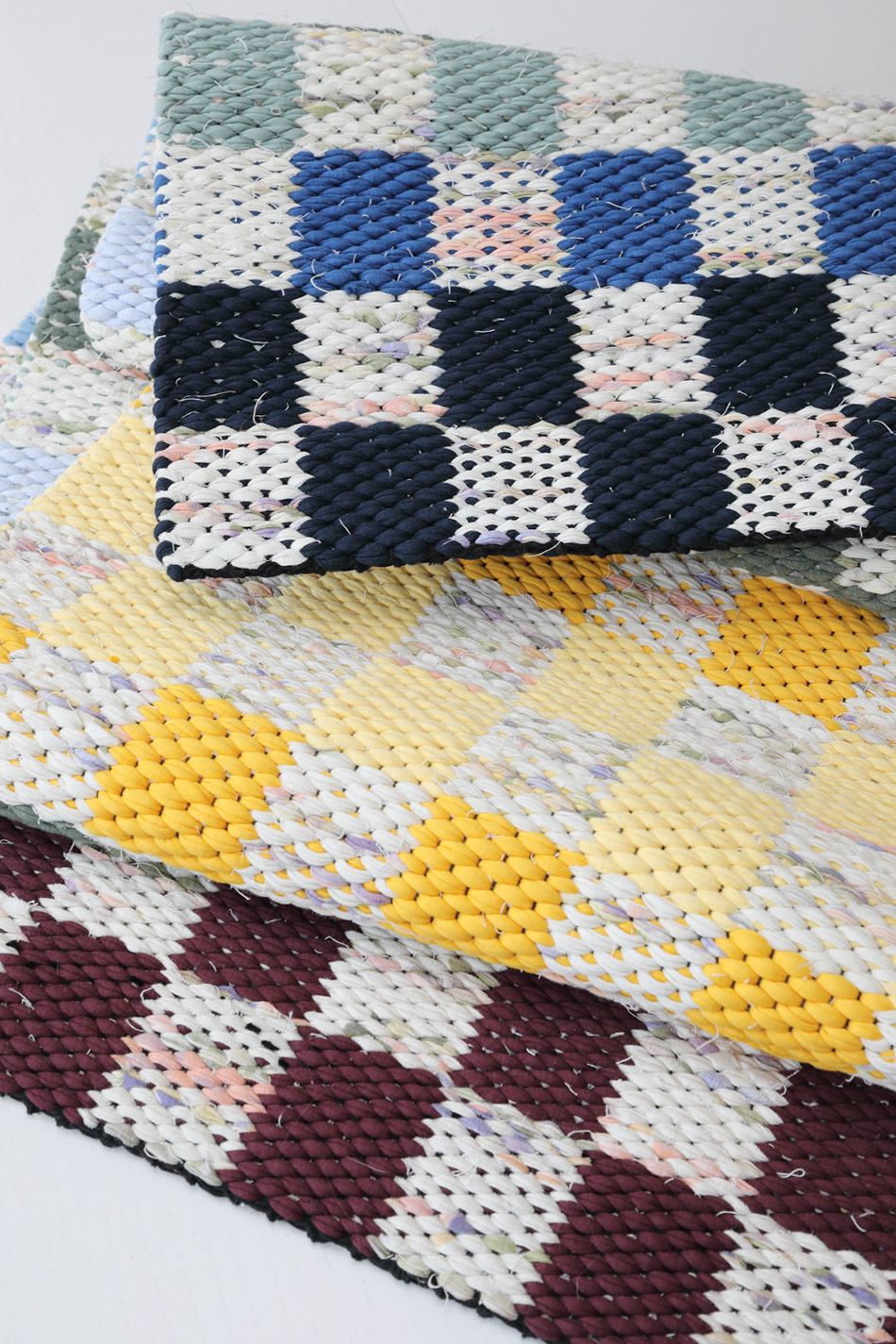
The checkered rug is a summer and winter weave, where the weft forms ideal hiding spots for the warp threads.
HEMS AND BINDINGS
Hem for Rag Rug
Fringe is the most common finishing method for rag rugs, but they can also be finished with a woven hem. The simplest hem is woven with split weft. The hem can also include some of the yarn used as warp, and the inner fold should be woven as thin and short as possible to avoid a bulky finish.
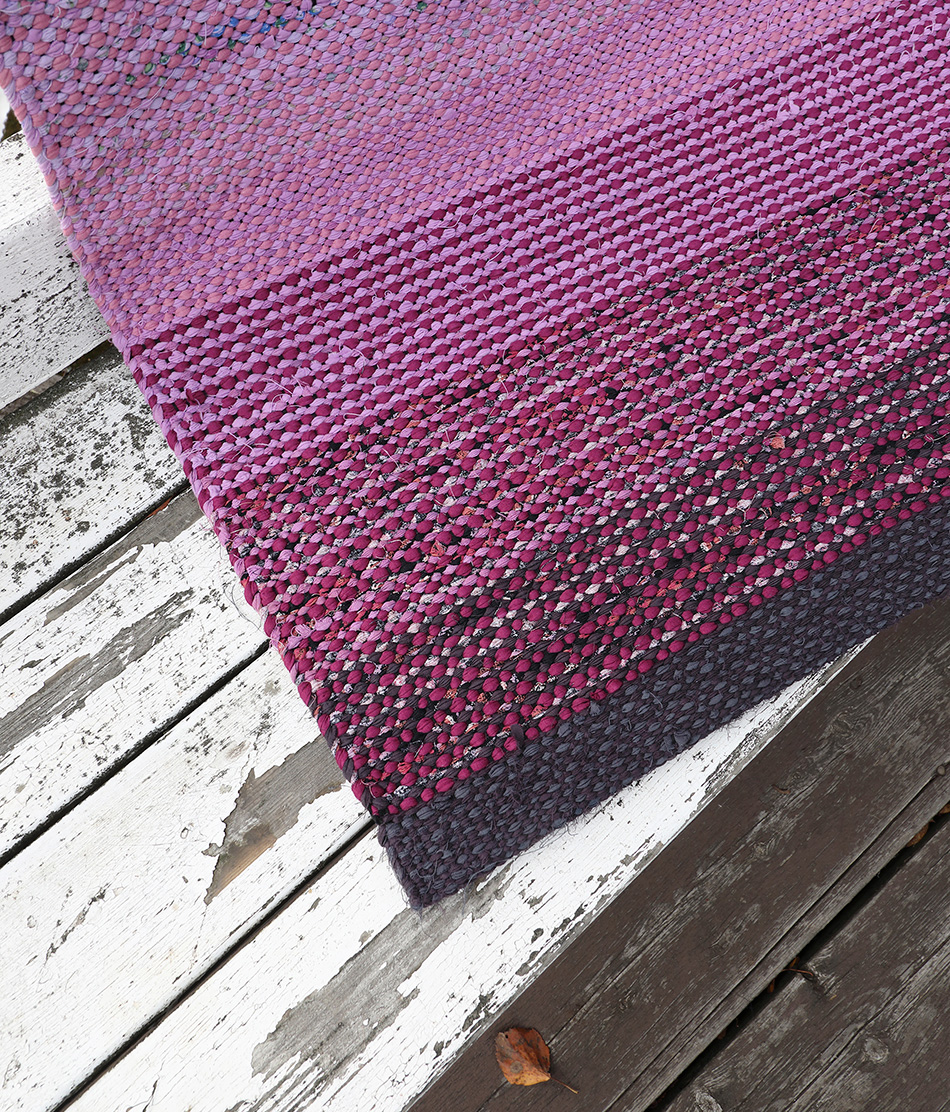
A hem is a neat and durable option even for rag rugs. In a dense rep rug, there is one jersey weft in addition to the rag weft, but it has been omitted from the hem. – The weave structure is not ordinary plain weave; every third and fourth warp thread is doubled (the threads are heddled side by side on the same shaft). The rug’s structure is firmer than in regular plain weave. 15-ply cotton twine warp, 3 threads/cm. Ombre Stripe Rag Rug 3742, The Weaver’s Pick 4/2020.
Pattern-woven rug hem
For pattern-woven rugs, hems are usually woven using the base structure, which is most often plain weave. Choose the wefts and their proportions so that the hem is the same width as the rug itself. The choice of weft and weave affects the rug’s width significantly, making hemming a challenging task. If you don’t have exact knowledge of how the fabric will behave, testing must be done at the beginning of the warp, or the hem must be woven based on best judgment.
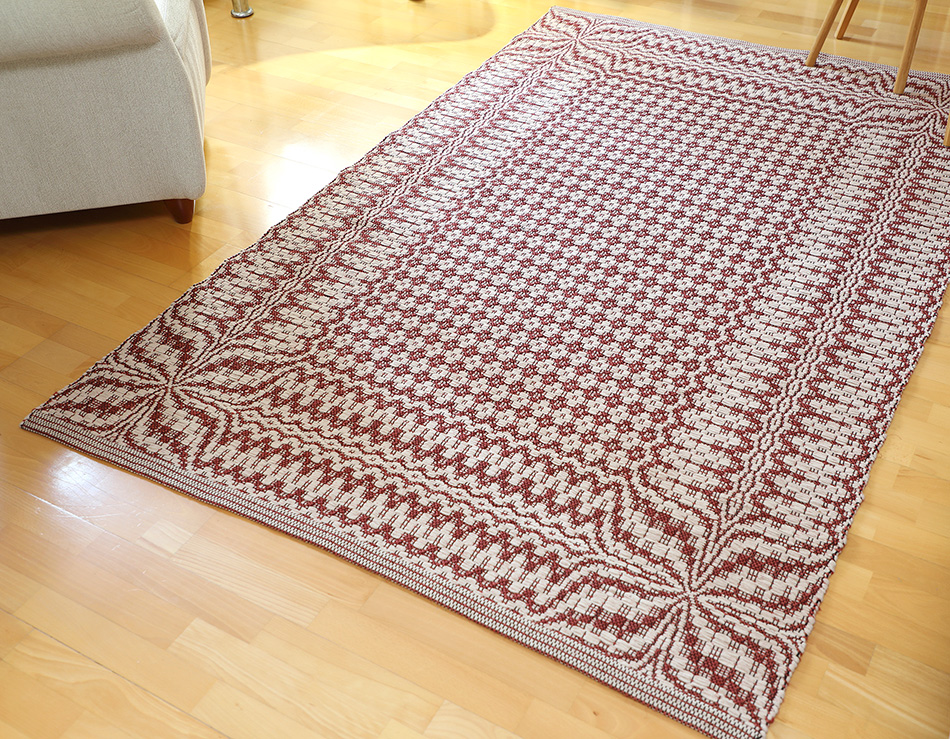
The hem of the patterned rug is woven by alternating 2 picks of tube yarn and 1 pick of jute twine, with a height of 9 cm. In the rug itself, tube yarn and jute twine are alternated pick by pick. Warp 18-ply twine, density 3 threads/cm.
Large Leafy rug 3812, Digi The Weaver’s Pick 2/2023.
Binding
For woven hems and rugs with binding, you should leave a knotting allowance of about 7–8 cm in the warp. Machine stitching alone is not enough to keep an ordinary rug end intact—warp threads must be tied with tight weaver’s knots.
Sew a rug binding tape or a sturdy fabric strip to the ends of the rug. Binding is usually sewn entirely by hand, as the rug and the tape together are too thick for a sewing machine. For a thin rug, you can first machine sew one edge of the tape and then finish the other side by hand.
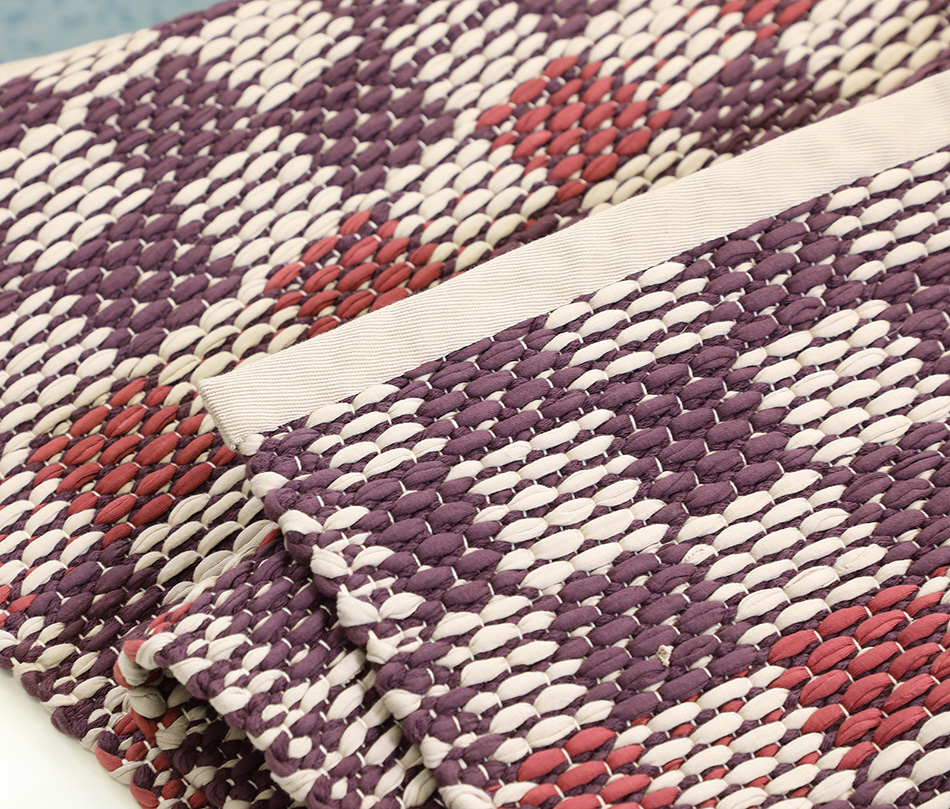
Binding with rug edging tape.

Save a piece of one of the rag wefts used in the rug and use it to bind the ends.
RUG-SPECIFIC SOLUTIONS
Finishing Thick Warps
Consider in advance how to finish the ends of the rug when the warp is made of thick rug weft or yarn. These rugs are already unique in themselves, so the finishing can also involve creative solutions.
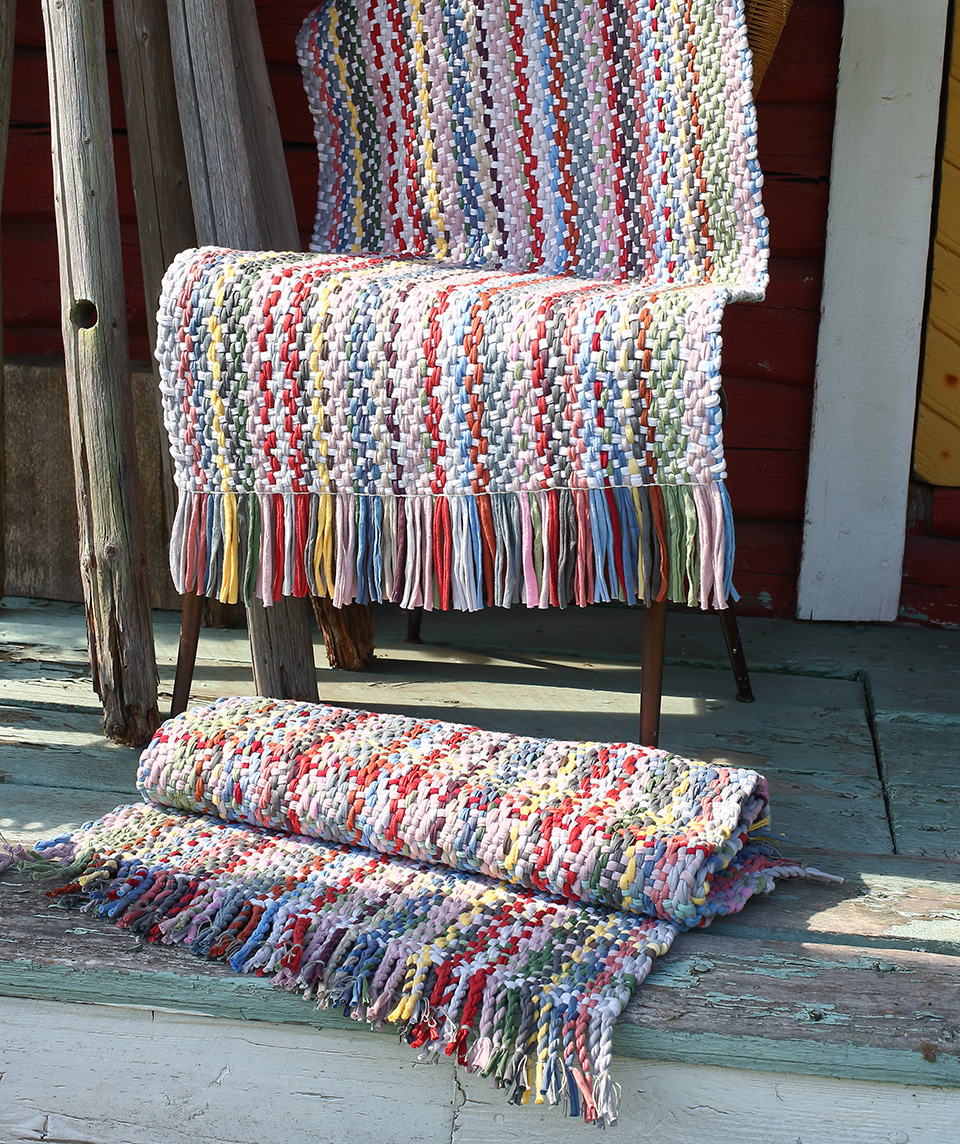
“Sokkotreffit” rug has a weft yarn used as warp. One rug’s ends are finished with stitching. In the other, the warp has been turned into twisted fringes, with the ends tied using thin yarn.
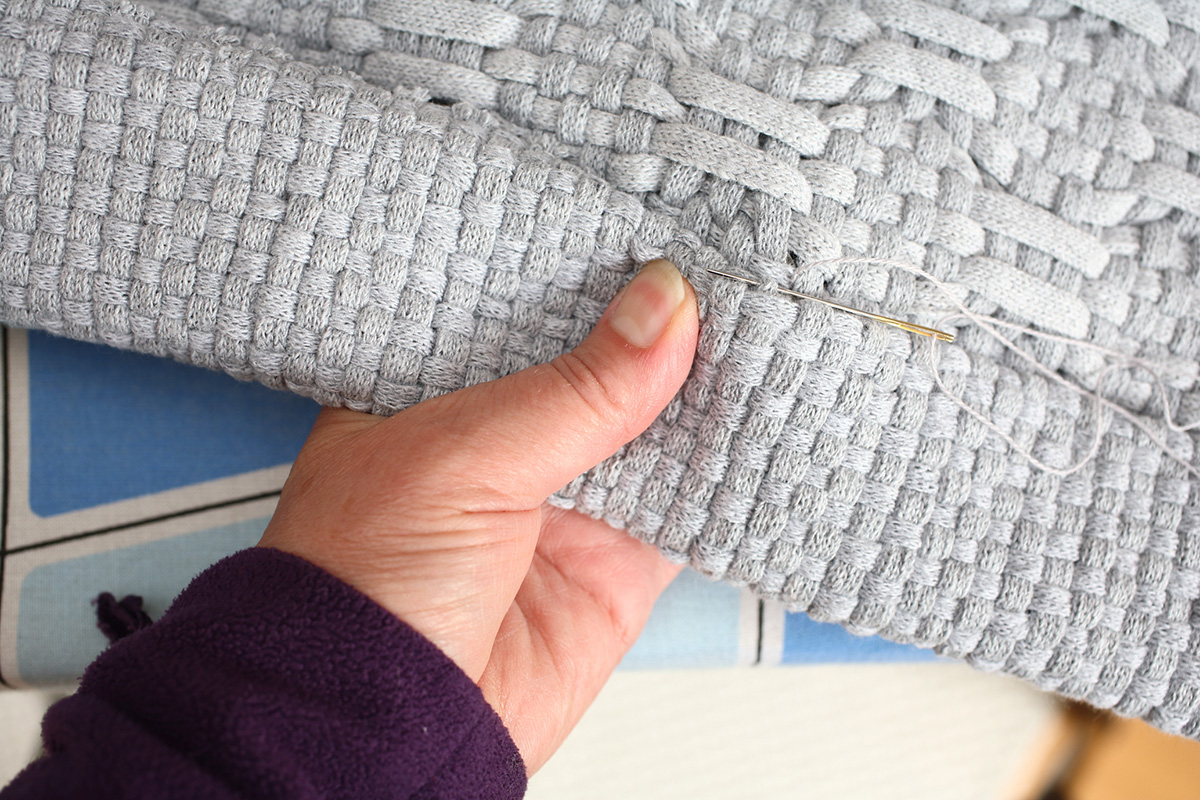
A woven hem usually ends up wider than the rug itself after washing. However, it’s an easy finishing method and works well for chair mats.
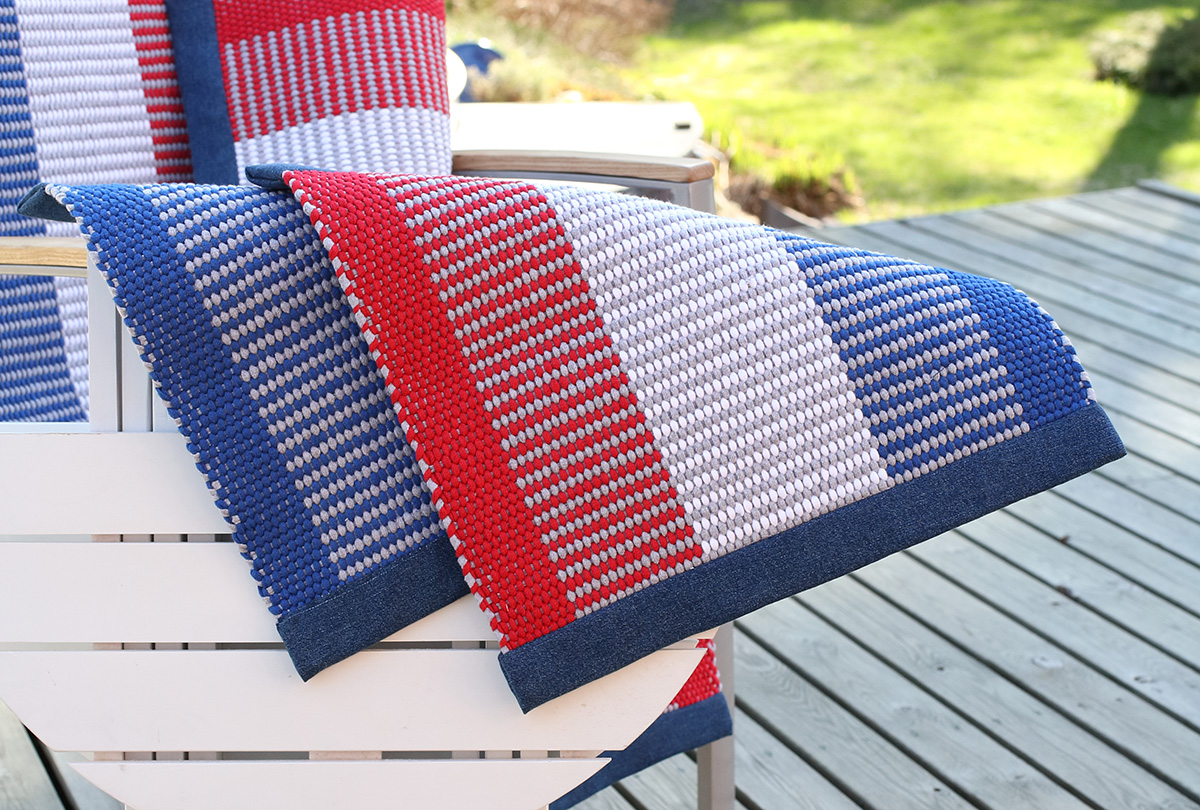
For flatweave rugs, fabric binding is a good option. A suitable fabric can be used to create a wide and sturdy binding for the rug end.
Instructions for all these finishes can be found in the Theme Digi The Weaver’s Pick issue 2/2025.
Weaving instructions for all the rugs can be found in the Mallikerta magazines and Digi Mallikerta issues.
Many of the patterns are also available in English in The Weaver’s Pick magazines and
Digi The Weaver’s Pick issues on the websites www.theweaverspick.com / www.mallikerta.fi.



